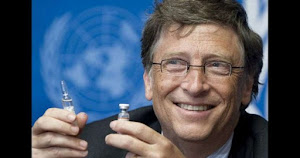The author has received an overwhelming response to his recent Global Research report entitled, “An Emergency Program of Monetary Reform for the United States.” The introduction to that report stated that, “the U.S. financial system headed by the Federal Reserve System has failed, and…only an emergency program of monetary reform can address conditions which may be leading to a catastrophe like the Great Depression or worse.”
This new report on “Monetary Reform and How a National Monetary System Should Work” continues the dialogue by outlining the principles and mechanisms available to help guide the creation of a monetary system for any nation that wishes to enjoy economic democracy with prosperity. This would be in contrast to the collapsing debt-based monetary system overseen by the Federal Reserve and the other central banks of the world, coordinated at the top by such institutions as the International Monetary Fund, the European Central Bank, and the Bank of International Settlements.
Note that all the banks of the Western world are ultimately private institutions owned by the world’s super-rich. The international banking structure is operated by and on behalf of the world’s monetary elite primarily for their own profit.
Just below the banking system are the giant corporations of the global economy which derive capital from and funnel profits into the financiers’ empire. Bringing up the rear are the populations and debt-serfs of the no-longer-sovereign nation states, including those of the United States, whose participation in the system as consumers is essential, but whose jobs continue to disappear as manufacturing is increasingly automated.
The author had realized as early as 1970 that the central problem with the world’s economy lay on the side of distribution, not production. He came to Washington, D.C., that year and spent most of the next thirty-six years working within sight of the Washington Monument, learning how things really work, and pondering the methods that might be more in concord with such founding documents of American democracy as the Declaration of Independence and the U.S. Constitution. Twenty-one of these years were with the U.S. Treasury Department.
Now, for the first time, this report builds on the findings of many of the world’s monetary reformers past and present by offering a complete prescription for a new and better world. This prescription is radically different from most progressive reform agendas that address only symptoms of the underlying systemic failures.
WHERE MONEY COMES FROM
When setting out to study monetary principles, we must realize how little we know of the real facts of monetary history. Economics is an extremely limited discipline rife with untested assumptions and unchallengeable dogmas. Its most pernicious doctrine is the assertion that there is something called “the market,” where there is an “invisible hand” that makes everything work out the way it is supposed to.
Actually, an economy functions according to the principles according to which it is designed and regulated. If it is designed to funnel wealth into the hands of the monetary controllers, then that is what the “market” and the “invisible hand” will do. If it is designed to foster “the general welfare,” as it should according to the preamble to the U.S. Constitution, then the “market” and the “invisible hand” will tend in that direction.
Unfortunately, we march today to the tune of the monetary elite, so they are the ones who reap the profits and the benefits. They are the ones on whom the “invisible hand” lavishes the wealth of the world.
It is done through the process of bank-created credit. While during the nineteenth century other forms of money circulated, such as large quantities of coinage, silver certificates, and government-issued greenbacks, almost all the money that exists today originates through a loan by a financial institution to an individual or a business.
When a loan is made it is issued as a liability on the bank’s ledger. When it is repaid, the liability is canceled. With today’s computer systems, all transactions are digitized, of course. The bank keeps the interest on the loan as its combined administrative fee and profit. The money that is lent had no prior existence.
Once money is created as credit, it takes many forms according to how the loan recipient spends it. Some credit is used by businesses or individuals as investment in order to generate profits over and above the amount they must repay to the bank with interest. If the money is used simply for consumer purchases, the individual consumer must pay back the loan through future earnings. In those cases where the borrower defaults on the loan or goes bankrupt, the money simply remains in circulation however it was spent.
Unfortunately, large amounts of credit are used mainly for speculation, not for any benefit to the producing economy. This includes securities bought on margin and borrowing by hedge funds where the fund may make a profit even if the value of its investments goes down. Bank-created credit in this case is little more than chips in a casino.
Other borrowing takes place by equity funds and other types of investors for leveraged mergers or buyouts of entire companies, where the predators wreck a company’s infrastructure by reducing costs and selling its assets, then pay back their bank loans before unloading the business on someone else.
The most important thing to realize about the banking system is that the money which enters into circulation as purchasing power must eventually be returned in the repayment of loans. This is why the Federal Reserve’s monetary measures—M1, M2, and M3—are meaningless, because so much of it has liens against it.
We are taught that paying it back is the way things should be—obviously, if we borrow something, we should pay back what we owe.
But the peculiar thing is that because the borrowed money pays for labor, commodities, rent, etc., it becomes part of the prices that are eventually charged for goods and services. However, when the money goes back to the bank to cancel a loan, that purchasing power disappears. Neither the banks nor economists ever make note of the fact that this process creates a chronic shortage of purchasing power which must be filled by more loans and more bank profits. The economy is thus a treadmill that borrowers must constantly trudge along in order to have enough money for survival.
So a system which is seemingly grounded in the simple adage that if you borrow you should repay is all wrong. The reason it is all wrong is that in most cases, individual consumers should never have to borrow in the first place. And we never ask ourselves why, with the abundance that is possible from modern science and technology, should people have to borrow money at interest for the necessities of life—a house, a car, household expenses, an education, etc.
Click here to read full article...


















